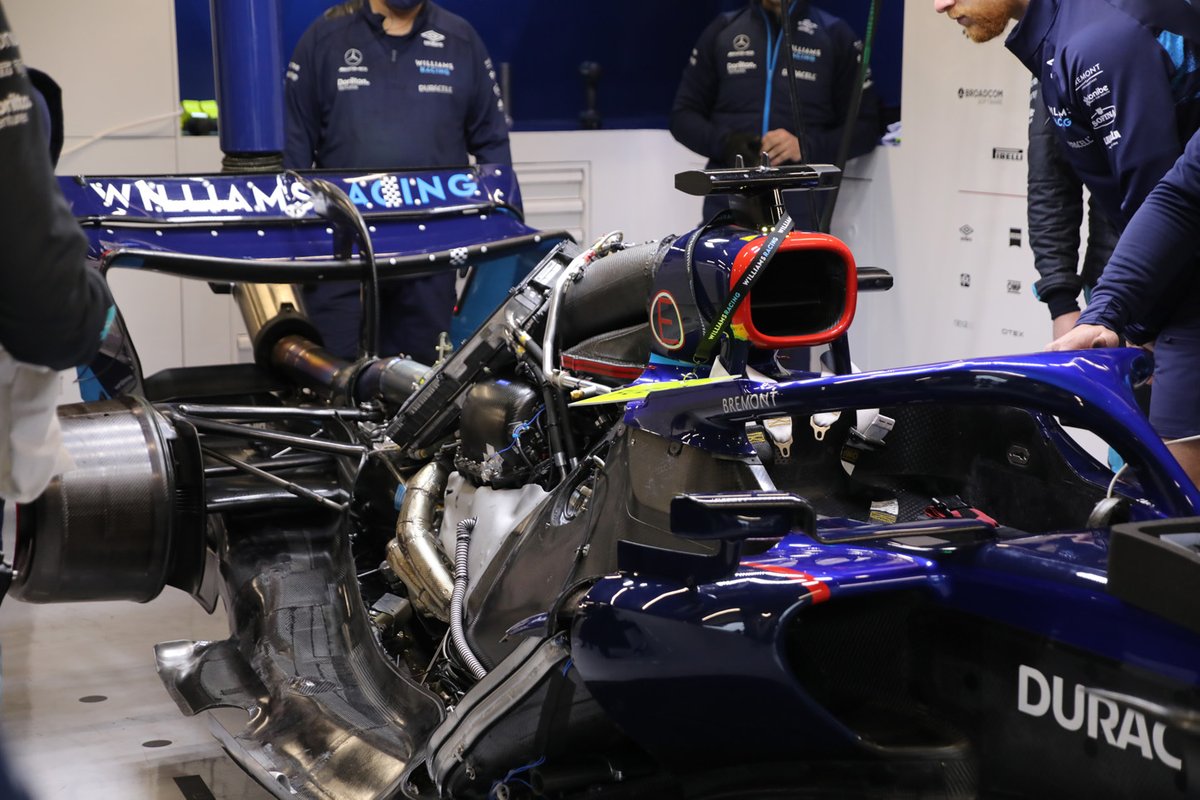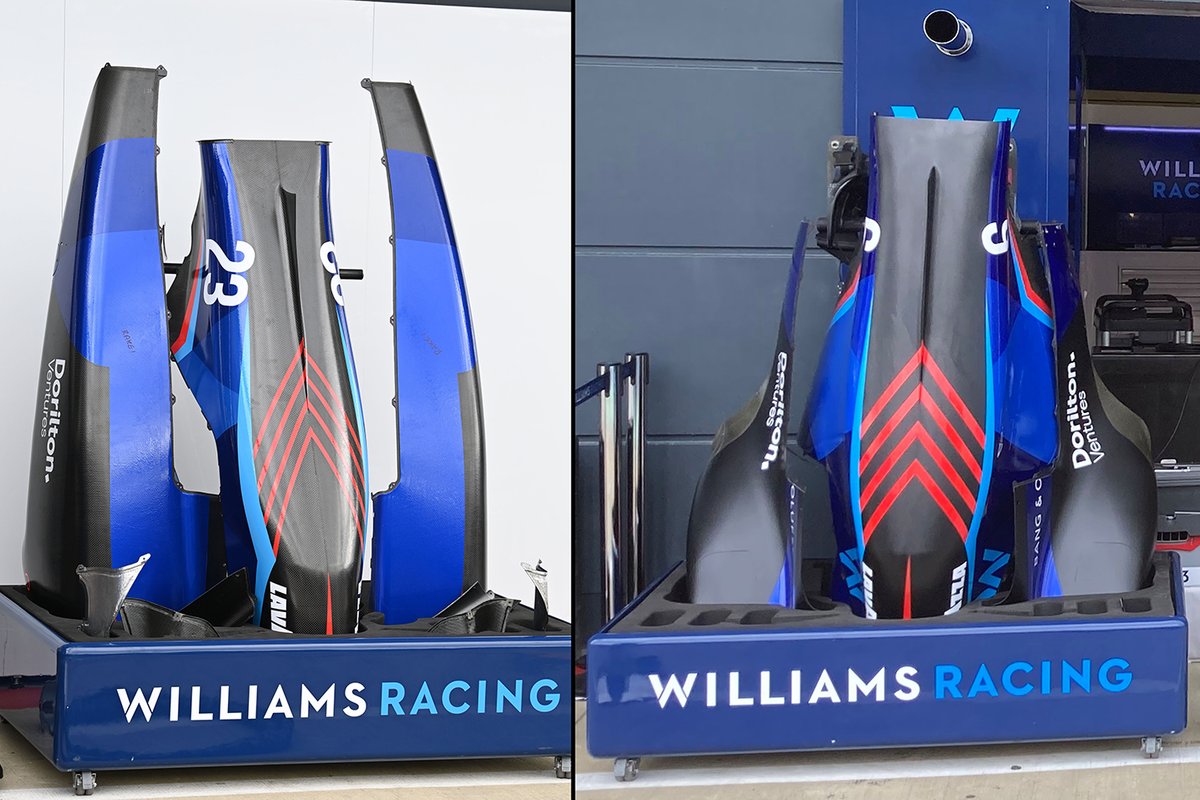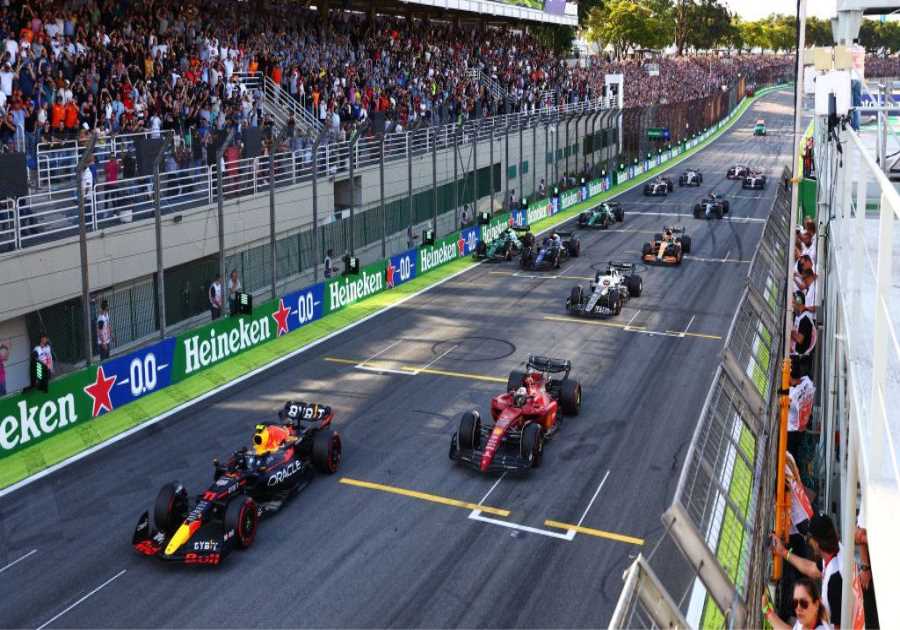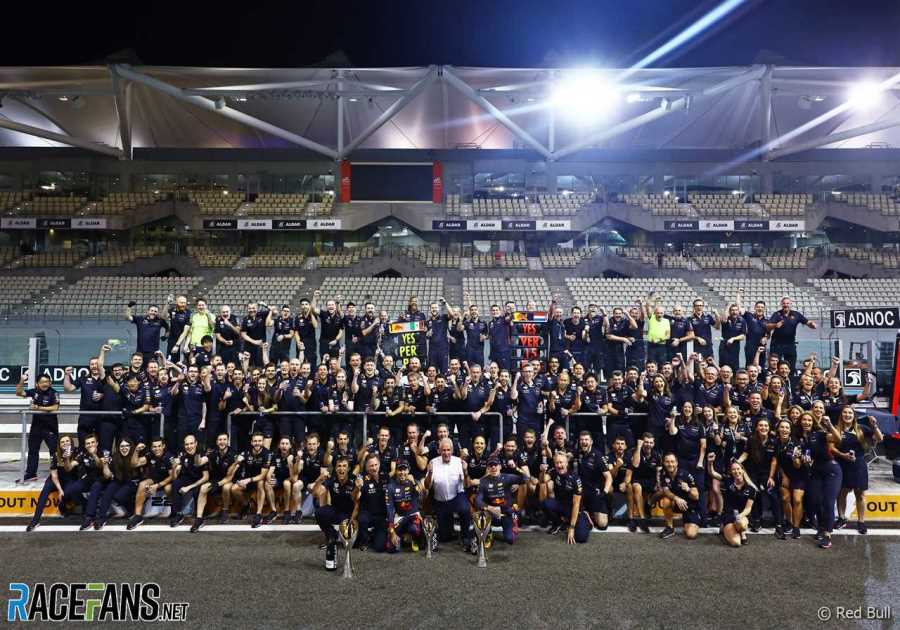
While it’s obvious that the changes will have an effect on the external airflow stream, there’s also a considerable amount of work that’s gone on underneath the hood in order to accommodate them.
It’s clear that there’s heavy influence in design decisions from both Ferrari and Red Bull, with the sidepods completely altered to take onboard a mixture of the design features seen on the leading pair.
While the overall design concept of its sidepods trend more towards Red Bull’s RB18, and some others on the grid that have gravitated towards a downwashing ramp solution, it has a very similar inlet, undercut and flank shape to the Ferrari F1-75, with a wide but shallow mouth design used to supply cool air to the radiators housed within.
The radiators, various coolers, electronics and other ancillaries have all had to be modified and/or repositioned too. Not only in order that the sidepod bodywork can be adjusted but so that the engine cover could be redesigned too.
Williams FW44 rear detail
Photo by: Giorgio Piola

Williams FW44 engine detail
Photo by: Giorgio Piola
Beneath the engine cover, where previously a pair of coolers were laid over the top of the power unit, there’s now just one cooler, taking up the type of position we’re used to seeing from Red Bull, McLaren and AlphaTauri.
If we take a look at the sidepod and engine cover bodywork before it is fitted to the cars, it’s pretty obvious to see just how different the two configurations are. The new layout, on the left below, features much wider and longer sidepod bodywork.
The engine cover is now much slimmer behind the airbox given the requisite changes that have been made to the size and position of the internal components.

Williams FW44 sidepod and engine cover comparison
Photo by: Uncredited
It’s also worth noting that the floor has also been treated to a design overhaul, with the FW44 now sporting a very different set of floor strakes on the leading edge of the underfloor tunnel. Meanwhile, the triangular-shaped floor edge wing has been discarded in favor of bringing the floor arc forward and altering its geometry.
A limitation on spares and the ability to use Silverstone as the basis for extensive back-to-back data collection means Nicolas Latifi will continue with the older-specification FW44 (bodywork, above right).
But the team is confident that it will see a sizeable performance boost with the new parts installed on Albon’s car.






